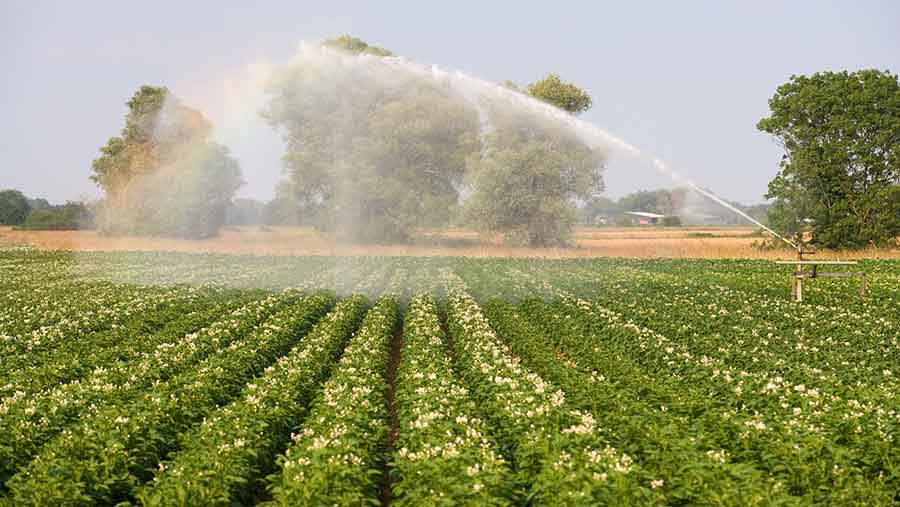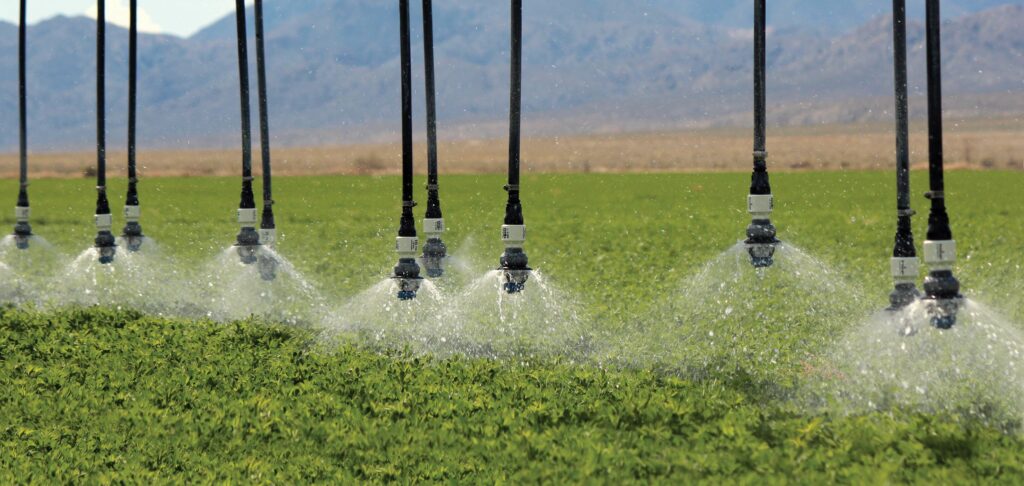Many practitioners consider using irrigation to protect their crops from drought. Getting started with irrigation is not worth it for every farm.

In dry summers, sprinkling can save yields. However, getting started is not for every company. Agrarheute spoke to the irrigation expert Ekkehard Fricke from the Lower Saxony Chamber of Agriculture on this topic. Fricke also notices that interest in the subject of irrigation has increased after the dry years. Many regions that used to have enough rain are increasingly struggling with early summer drought.
Increased investment costs
In recent years, the costs for pipeline construction, material and well construction have increased. The Lower Saxony Chamber of Agriculture calculates investment costs of between €2,500 and €5,000/ha for irrigation with fixed underground pipes. A hydrogeological report is often required for the approval of water withdrawal. There are also costs for the irrigation machine.
When making a decision, farmers should consider their entire crop rotation . The investment is particularly worthwhile for vegetables, potatoes and malting barley. In the crop rotation there should be several crops that need irrigation. The investment is only worthwhile if the contribution margins of the cultures are positive overall despite irrigation.
Except for potatoes or table soy, the expense of a sprinkler system, including technology and lines, is by no means worthwhile in every common arable crop. Tests from several years show this.
Machines with powerful sprinklers are widely used in large-scale vegetable cultivation, for industrial vegetables and in arable farming , especially with potatoes or soybeans. Heavy sprinklers are the irrigation system we have used most frequently up to now.

But in which crops and from when and where and under what conditions is the additional water worthwhile? Every farm manager must decide this question individually for his cultivation and marketing. For example, multi-year trials from Baden-Württemberg provide figures on the need for irrigation of important threshing crops.
Trials on irrigation in southern Germany show that sprinkling on the field is usually relatively unprofitable for conventional crops, because it costs a relatively large amount of money overall. Based on test results from Baden-Württemberg, it is currently only recommended to a very limited extent to invest in expensive irrigation technology alone if this is to be used exclusively for arable farming without the cultivation of potatoes, seed corn or special crops.
On the other hand, with additional utilization of existing technology, irrigation with mobile devices is particularly profitable for soybeans, grain maize and malting barley. The profitability table provides solid figures on the need for irrigation of important arable crops.
The reading example
On average, peas achieved an additional yield of 22 dt/ha over the years with 140 mm of irrigation water. It exceeded the marginal additional yield of 18 dt/ha, which is necessary to cover the variable costs, but not the 34 dt/ha to recoup the variable plus the fixed costs.
Thus, although the additional revenue generated exceeded the variable costs (+ 65 euros/ha), it was not sufficient to cover the variable plus fixed costs (– 241 euros/ha).
2. The calculation
The table is based on tests carried out between 2010 and 2015 at the Forchheim test farm of the Agricultural Technology Center (LTZ) Augustenberg , 117 m above sea level and 10.1 °C annual temperature. In threshed crops, they were determined with two varieties each
3. The location
There is an average annual precipitation of 742 mm per year. The loamy to loamy sand has 24 to 32 soil points with 13 percent usable field capacity (nFk). Irrigation was carried out from 40 to 45 percent nFk. The yields of unirrigated plots are compared with those of optimally irrigated plots.
4. The sprinkler system
The calculations were based on a 20 m shallow well with a diesel engine-driven suction pump with 35 kW at 12 bar and 50 m3/h and 10 ha per well. The mobile sprinkler with 400 m has single sprinklers with 54 m width with an average of 100 mm and 48 m3/h for an irrigated area of 25 ha per year.
5. The worthiness
It was calculated for each year based on the yields and water quantities determined in this way for the crops. They are worth irrigating if the additional income at least covers the additional costs of irrigation.


